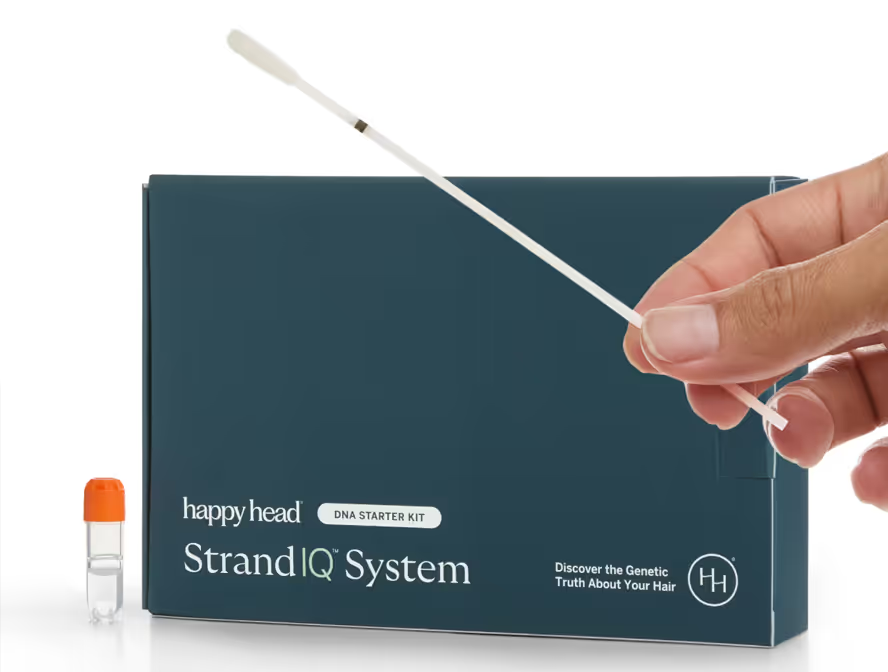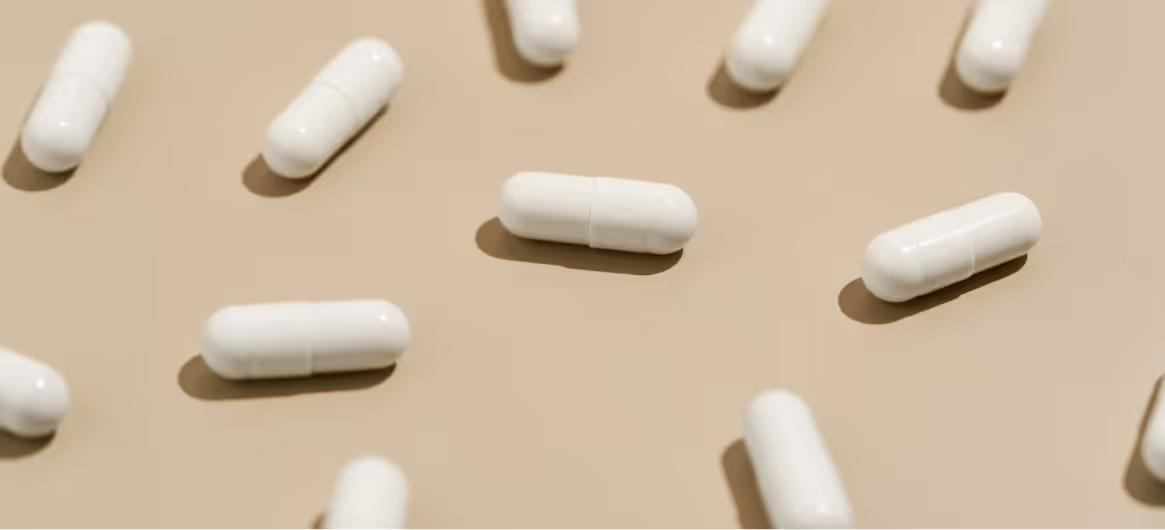When it comes to hair health, protein usually steals the spotlight—but lipids, the natural fats coating each strand, are just as vital. If your hair feels dull, brittle, or perpetually parched, your lipid layer might be out of balance.
This often-overlooked factor is tightly tied to your genes, your diet, and your hair care routine. Understanding your personal risk for lipid deficiency can unlock a smarter, science-backed approach to reviving your hair's natural resilience.
What Are Hair Lipids, and Why Do They Matter?
Hair lipids form part of your hair’s hydro-lipid layer, a protective film made up of natural oils and water. This layer acts as a moisture sealant, protecting strands from external damage while maintaining internal hydration.
Fatty acids—especially omega-3s—are the building blocks of this barrier. They help your hair retain elasticity, strength, and shine, while also allowing other key compounds (like ceramides) to bond with and smooth the cuticle layer. When your hair lacks these healthy fats, you’re more likely to experience dryness, frizz, breakage, and dullness.
Genetics and Lipid Metabolism: The Role of FADS and ELOVL
Your genetic blueprint influences how efficiently your body synthesizes and processes fatty acids. Variations in the FADS (fatty acid desaturase) and ELOVL (elongation of very long chain fatty acids) gene families can impair your ability to produce and distribute the “good” fats your hair needs.
If you carry one of these variants, your hair might require additional dietary support or specialized products to maintain adequate lipid levels. That’s where a personalized approach—like the one offered by Happy Head’s StrandIQ™ analysis—can make all the difference.
Common Causes of Lipid Depletion
Even if your genes are working in your favor, your daily habits might not be. Lipid loss can be accelerated by:
- Over-washing or using harsh shampoos
- Frequent heat styling or chemical treatments
- Aging, which naturally reduces oil production
- Poor nutrition or low-fat diets
- Environmental exposure (e.g., UV rays, dry climates, wind)
How to Restore Healthy Hair Lipids: Tailored Recommendations by Risk
Low Risk: Keep Your Natural Oils Working
If your Happy Head StrandIQ analysis identifies you as being at low genetic risk for lipid imbalance, the goal is to preserve the integrity of your natural oils. Consider following these tips to keep your tresses healthy and happy:
- Omega intake
Add omega-rich fish like salmon or sardines to your meals once or twice weekly to support scalp and hair health. - Product choice
Use shampoos and conditioners formulated to protect your hair’s hydro-lipid barrier from daily stressors. - Gentle washing
Avoid overwashing, which can strip away essential oils and weaken the protective layer around your strands. Use a gentle shampoo. - Nutrient support
Maintain a diet rich in zinc and antioxidant vitamins (A and E) to help your hair retain its natural moisture and strength.
Medium Risk: Add More Omegas and Topical Protection
If your hair is genetically predisposed to lipid deficiencies, or if you find that your hair is feeling dull and parched even with low risk interventions, it may be time to add more advanced measures to your hair care routine. These interventions can include:
- Routine fish intake
Eating fatty fish—such as mackerel, salmon, or sardines—two to three times per week can help to replenish essential fatty acids in your hair. - Prioritize plant-based fats
Include avocados, walnuts, and flaxseed in your diet regularly to support lipid balance from diverse sources. - Hydrating products
Apply leave-in conditioners or deep-conditioning masks weekly to help rebuild your hydro-lipid layer. - Avoid harsh products
Limit the use of drying shampoos, heat tools, and chemical treatments that may degrade protective oils. - Consider using supplements
Consider a daily supplement with omega-3s, zinc, and vitamins A and E for consistent internal support.
High Risk: Double Down on Diet, Products, and Professional Support
If your StrandIQ analysis has identified you as being at a high risk level, then your body may not be producing or retaining hair-supporting oils efficiently. A more intensive care plan can help reinforce your hair’s structure.
- Fatty fish focus
Be strategic with your diet, prioritizing omega-rich fish such as anchovies, herring, mackerel, wild salmon, sardines, trout, and tuna—three times weekly for sustained lipid replenishment. - Diverse fat sources
Add daily servings of healthy plant fats like avocado, flaxseed, and walnuts to strengthen your hair from within. - Medical support
Talk with a doctor or dietitian about fatty acid supplements tailored to your genetic needs and nutritional gaps. - Targeted haircare
Use lipid-replenishing products—such as oil serums, moisturizing masks, and stay-on conditioners—weekly. - Lifestyle adjustments
Avoid overwashing, minimize heat styling, and protect hair from saltwater and harsh weather to reduce lipid depletion.
Your Personalized Hair Lipid Strategy Starts Here
Caring for dry or damaged hair doesn’t require a one-size-fits-all routine. With tools like StrandIQ and customized product solutions, you can take a science-based, personalized approach to restoring your hair’s natural strength and shine.
At Happy Head, we design hair care that supports your unique biology, empowering you with formulas tailored to your hair type, risk factors, and long-term goals.
Resources
StrandIQ SNP Marker Count: 8
StrandIQ Genes for Trait:
ELOVL3, ELOVL5, ELOVL7, FADS1, FADS2, MYRF, PITX3, TMEM258
References:
Ahmed, A.A., et al. (2019). Genetic hair disorders: a review. Dermatology and Therapy, 9(3), 421–448. PMID: 31332722.
Ge, L., et al. (2003). Identification of the delta-6 desaturase of human sebaceous glands: expression and enzyme activity. Journal of Investigative Dermatology, 120(5), 707–714. PMID: 12713571.
Jakobsson, A., et al. (2005). Differential regulation of fatty acid elongation enzymes in mammalian cells. American Journal of Physiology Endocrinology and Metabolism, 289(4), E517–E526. PMID: 15855229.
Jakobsson, A., et al. (2006). Fatty acid elongases in mammals: their regulation and roles in metabolism. Progress in Lipid Research, 45(3), 237–249. PMID: 16564093.
Mihály, J., et al. (2014). Increased FADS2-derived n-6 PUFAs and reduced n-3 PUFAs in plasma of atopic dermatitis patients. Skin Pharmacology and Physiology, 27(5), 242–248. PMID: 24854601.
Ponec, M., et al. (2004). The role of epidermal lipids in skin barrier function. Journal of Lipid Research, 45(10), 2002–2010. PMID: 15187147.
Seo, J., et al. (2025). The role of lipids in promoting hair growth through HIF-1 signaling pathway. Scientific Reports, 15, 4621.
Tarling, E.J., et al. (2008). ATP-binding cassette transporter A1 (ABCA1) and the biogenesis of high-density lipoprotein (HDL). Journal of Lipid Research, 49(5), 901–911. PMID: 18356542.
Voulgaridou, G.P., et al. (2020). Elovl elongases as therapeutic targets in dermatology and oncology. Molecular Biology Reports, 47(5), 3793–3804. PMID: 32331365.
Westerberg, R., et al. (2004). Role for ELOVL3 and fatty acid chain length in development of hair and skin function. Journal of Biological Chemistry, 279(7), 5621–5629. PMID: 14581464.
This content, including StrandIQ™ DNA analysis reports and any Happy Head products and/or services referenced therein, is for informational and cosmetic purposes only. It is not intended to diagnose, treat, cure, or prevent any disease. This content does not constitute medical advice and should not be used to make healthcare decisions. References to prescription treatments are educational in nature. Always consult a licensed healthcare professional for any medical concerns or treatment decisions.








.avif)

